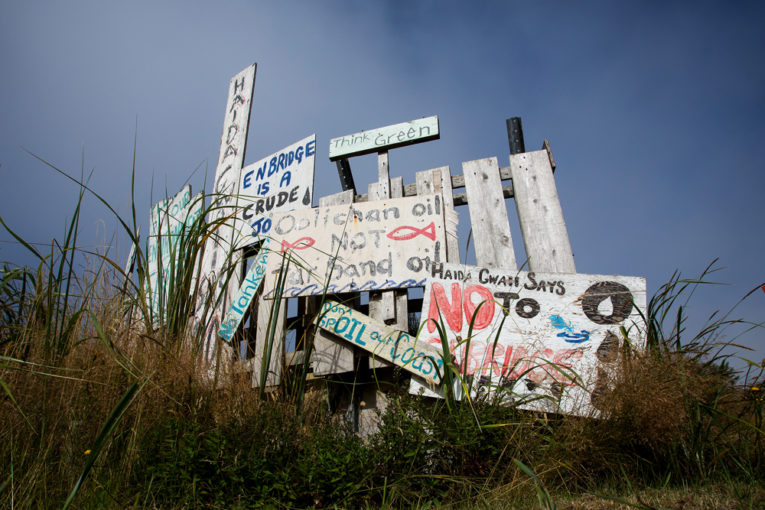
British Columbia’s Bill 41, aimed at implementing the Universal Declaration on the Rights of Indigenous Peoples (UNDRIP) into provincial legislation is — depending on one’s perspective — either a forward-looking framework that will provide much-needed guidance to oil and gas companies and others dealing with Indigenous people, or a misplaced attempt to do so that will create a host of new challenges for reconciliation efforts.
Roy Millen, a partner in Blake, Cassels & Graydon LLP’s Vancouver office, believes the law — introduced on Oct. 24 and given second reading on Oct. 30 — is a bit of both. It has not yet been passed or proclaimed.
“I think the province is trying to do something good and symbolic that has, however, produced unanticipated wrinkles that have already created and will continue to create short-term uncertainties for project proponents,” he said.
The United Nations General Assembly adopted UNDRIP in 2007 by way of a huge majority. Canada was only one of four naysayers, but in 2016 Prime Minister Justin Trudeau announced that his government was a “full supporter.”
A private member’s bill incorporating UNDRIP into federal legislation, Bill C-262, passed the House of Commons in 2018, but died in the Senate when the recent election was called.
The B.C. legislation, for all intents and purposes, mirrors Bill C-262. And it raises many of the same questions.
Some of those questions are, ‘What does Bill 41 mean, where is it going, when and how will it be implemented, what should stakeholders do in the meantime, and can anyone sue the government if they’re not happy with the timing or manner of implementation?’
Lawmakers, including those from First Nations, have expressed similar concerns. The main issue appears to be whether the legislation gives First Nations a veto.
Ellis Ross, Liberal MLA for Skeena and former Chief Councillor for the Haisla Nation Council wondered what the outcome would be, for example, if several First Nations reached agreement with the Crown after consultation, but one held out.
“Does the Crown withhold its decision?” he asked during the second reading of the bill on Oct. 30. “If that’s not a veto, I’d like some explanation on what that is, if the Crown doesn’t make a decision until they get that final agreement. In some cases, this could take months, if not years. So just a little bit of clarity.”
I think the province is trying to do something good and symbolic that has, however, produced unanticipated wrinkles
Roy Millen, partner in Blake, Cassels & Graydon LLP’s Vancouver office
Clarity, Ellis went on to say, was important not only to traditional project proponents but also to First Nations, who were increasingly applying for permits themselves.
“There are First Nations that are actually leading environmental assessments for their own purposes, for their own projects,” he said. “They’re waiting for that Crown decision. They’re respecting the Crown’s authority, and they want it.”
However that may be, B.C. committed to fully implement UNDRIP, and Bill 41 fulfills that commitment by stipulating that the province must take “all measures necessary” to ensure that its laws are consistent with UNDRIP.
Thomas Isaac, a partner in Cassels Brock & Blackwell LLP’s Vancouver office, believes that’s virtually impossible because UNDRIP requires governments to obtain “free, prior and informed consent” (FPIC) before developing any project affecting the lands and territories of Indigenous peoples.
“FPIC can be interpreted to imply that governments cannot act without the consent of Indigenous peoples even when such actions are matters of general policy for the good of society, and otherwise justifiable under Canadian law,” he said.
But, he maintains, that’s inconsistent with Canadian law, which requires a standard of “meaningful consultation” with Indigenous groups with regard to projects affecting their land.
“Our Indigenous rights regime, as articulated by the Supreme Court of Canada (SCC), mandates a consideration of both the Indigenous perspective and the broader, societal perspective,” Issac said. “It recognizes that, at times, broader, societal interests justify potential incursions on Indigenous rights.”
By failing to account for this “fundamental incompatibility,” Isaac concludes, Bill 41 cannot advance the very objective of furthering the reconciliation it sets out to achieve.
Isaac is keen to point out, however, that he doesn’t oppose UNDRIP.
“I just have a problem with B.C. trying to advance a laudable objective in a way that can’t be implemented,” he said.
For his part, Millen argues that consent has been part of Aboriginal law since the SCC began formulating the principles in earnest in the nineties.
“Consent has always been required if Aboriginal title is being infringed, and that principle is consistent with UNDRIP,” he said. “But that’s not that same as having a veto and a sovereign right to withhold consent, which is an interpretation of Bill 41 that some people are promoting — a view that is neither consistent with Canadian law nor with UNDRIP.”

Both lawyers agree, however, that the explicit language of Bill 41 is impractically broad.
“As the Bill is worded, the B.C. government has a positive obligation to do whatever it takes to ensure that every statute and regulation that affects Indigenous people is consistent with UNDRIP on the day the legislation passes,” Isaac said. “In the real world, that’s impossible with respect to each of UNDRIP’s 46 articles and 72 distinct paragraphs.”
Even if the province was successful in implementing Bill C-41, Isaac adds, the consequence would be an “upheaval of the entire legal system” in the province.
“In the short term, what you’d get is more uncertainty in an already uncertain world,” he said. “And in the long term, that uncertainty could transform itself into something much more challenging for doing business with Indigenous people.”
Millen is a little more optimistic.
“If the aim was certainty, I agree that we won’t have it in the short term, but it does remain the long-term objective behind Bill 41,” he said. “The reality, however, is that there is no question that most project proponents — and they’re the people I represent — are seeking consent,” he said.
Matthew Kirchner, managing partner at Ratcliff & Company LLP in Vancouver, opines that uncertainty is not an issue that emerges from the legislation.
“It’s a forward-looking law that incorporates UNDRIP’s very general principles to provide a legislative framework for designing and processing future projects affecting Indigenous people,” he said. “Any initiative of that ilk has to be helpful, not harmful, because it will create greater certainty for all.”
In any event, law firm Fasken Martineau DuMoulin LLP says that the passage of Bill 41 will not bring about immediate change, as aligning provincial laws will take time.
The legislation does not provide for the ability to veto decisions on resource projects
Law firm Fasken Martineau DuMoulin LLP
“Companies will not immediately see changes when the legislation comes into effect,” the law firm said in a note on its website. “The legislation will not result in the re-opening of existing permits or certificates, or affect current regulatory timelines. The legislation does not provide for the ability to veto decisions on resource projects.”
As well, the law firm notes, the Ministry of Energy, Mines and Petroleum Resources (EMPR) does not anticipate any significant changes to the regulatory framework for mining and oil and gas.
“The legislation will not change how EMPR consults with First Nations nor how operational decisions are made,” Fasken stated. “Any future changes (e.g., amendments to legislation) would come in collaboration with all parties,”
In other words, where a treaty or other comprehensive agreement containing a consent requirement is in place, the consent of Indigenous Nations participating in an environmental assessment would be required in order for a project to proceed.
“Not all environmental assessments will be subject to such agreements, and the development of any such agreements will be done transparently, in consultation with stakeholders,” the law firm adds.
Financial Post
You can read more of the news on source
